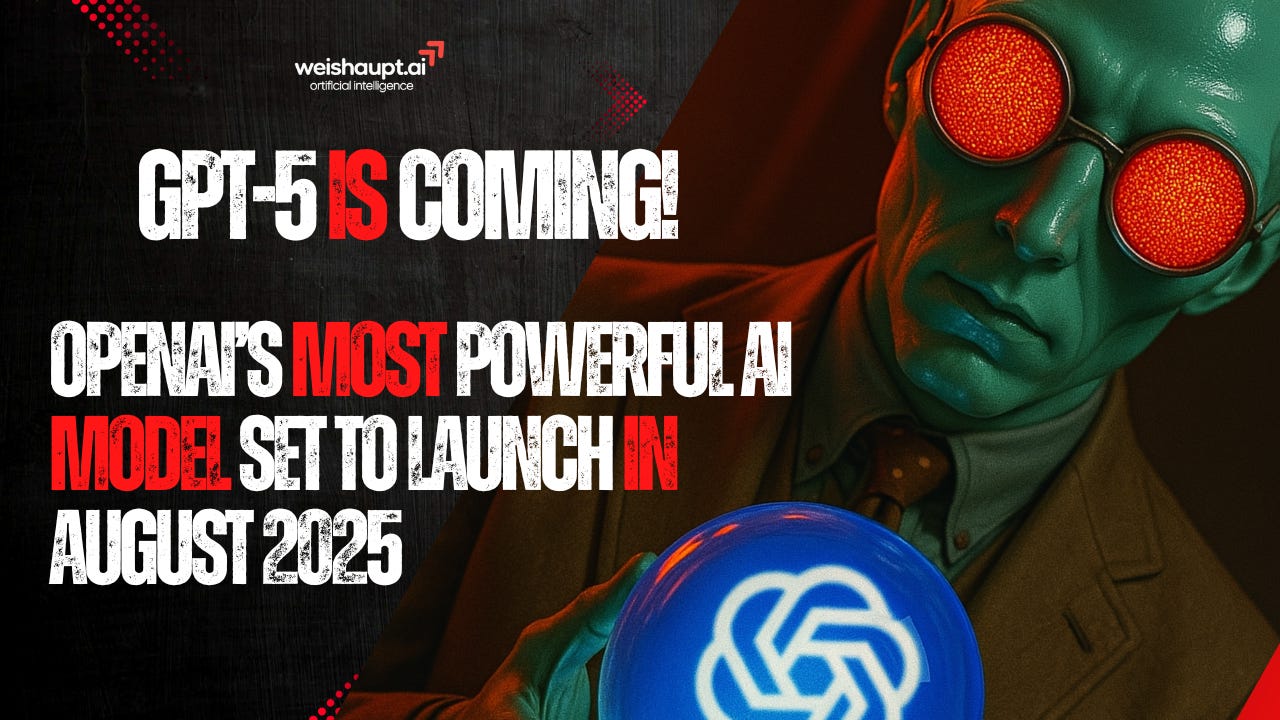OpenAI is preparing to launch GPT-5, its next-generation AI model, with a target release in August 2025. Sooner than originally expected. After multiple delays and months of internal testing, signs now point to a finalized product that’s nearly ready for public release. CEO Sam Altman confirmed the launch is “coming soon” in a post on X and again on the Theo Von’s podcast, where he praised the model’s performance
Final Countdown: Testing and Readiness
Multiple indicators suggest GPT-5 is in the final stages of rollout. Testers already have access to the model, and OpenAI’s security team is conducting red teaming to identify and mitigate potential vulnerabilities before release. These steps mirror the final checklist used in previous launches, strongly suggesting that GPT-5 is nearly complete.
A Smarter, Stronger GPT
According to early reports, GPT-5 will feature a hybrid architecture that combines the strengths of traditional large language models with enhanced reasoning abilities, allowing it to better solve complex problems, write code, and understand abstract logic.
It will also be multimodal by design, capable of processing and generating not just text but also audio, images, and video, all within a unified framework. This represents a major leap beyond GPT-4 and GPT-4o, which had multimodal features but relied on separate model components.
Additionally, GPT-5 will reportedly support an enormous context window of over 1 million tokens, far surpassing the 128,000-token limit of GPT-4. This upgrade means users will be able to input significantly larger documents, codebases, or conversations without needing to break them into chunks.
Flexible Options: Nano and Mini Versions
OpenAI plans to offer scaled-down versions of GPT-5, referred to as “mini” and “nano”, to allow for lighter, faster deployment. The nano version will be API-only, while the mini version will be accessible both via API and within ChatGPT. This tiered model gives developers and enterprises more flexibility to match performance needs with cost and speed.
Delayed but Refined
While GPT-5 was originally slated for a May 2025 release, OpenAI opted to delay the launch to ensure the model met internal standards for safety, alignment, and reliability. Altman and other OpenAI executives have emphasized that GPT-5 will not include the experimental math model recently used to achieve gold medal-level results in the International Mathematical Olympiad. However, the achievement still signals the kind of advanced reasoning OpenAI is targeting.
A Return to Open-Source?
In a surprise twist, OpenAI is also planning to release a new open-weights model, the company’s first since GPT-2 in 2019. This model, which could arrive before or after GPT-5, is expected to be a lightweight system potentially similar to the o3-mini. It will reportedly be hosted on platforms like Azure and Hugging Face, giving developers more access and control.
The Bottom Line
GPT-5 is shaping up to be the most powerful, versatile, and developer-friendly AI model OpenAI has released to date. With its multimodal input, advanced reasoning, million-token context window, and API-scalable versions, it promises to raise the bar for what generative AI can do across industries.
OpenAI’s careful rollout, coupled with its commitment to safety and openness, reflects a new phase in AI evolution. One where performance and responsibility are being built side by side.
The countdown has begun. GPT-5 is coming—and it’s bringing the future with it.
Watch on YouTube, or listen on Spotify.
Sources:
Axios reporting on GPT-5’s expected launch and features, including mini/nano versions and open-source plans.
Sam Altman's July 19 X post and July 23 podcast appearance; Axios and The Verge coverage of the shifting timeline and technical details.
General tech reporting (e.g., The Verge, tech blogs) summarizing anticipated features such as multimodal design, token window expansion, and developer API access.



